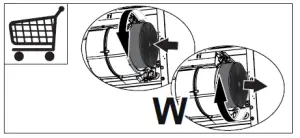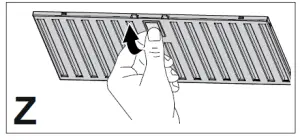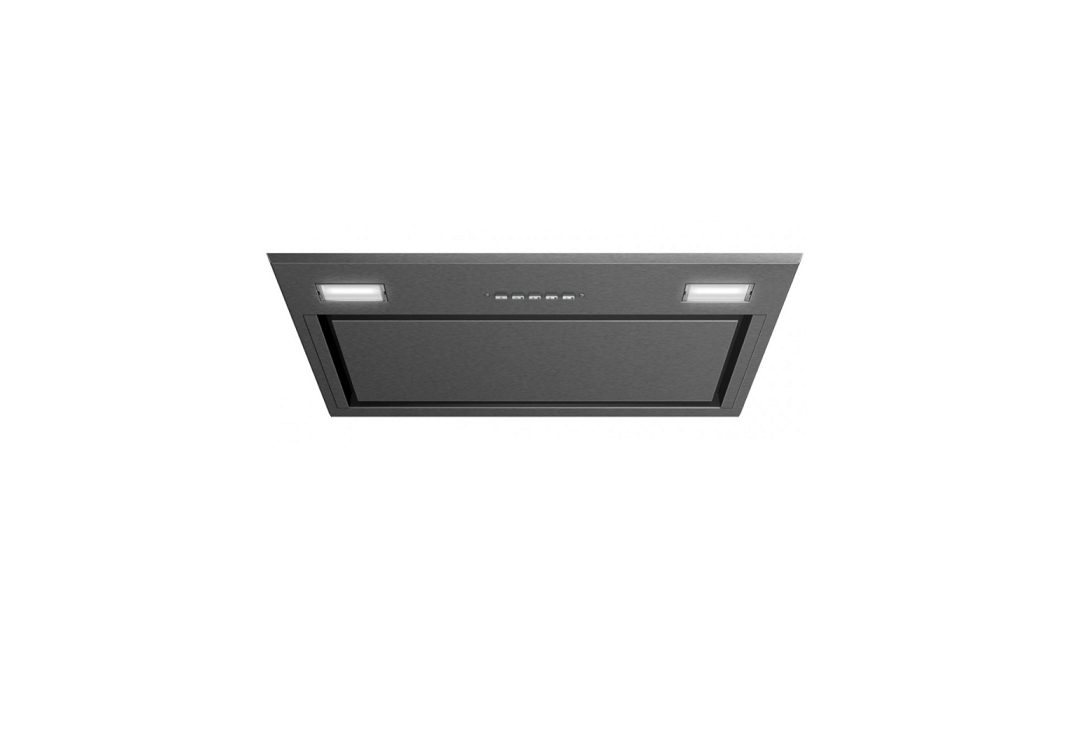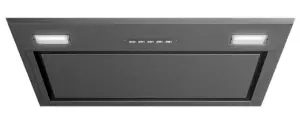Electrolux Integrated Rangehood User Manual
WE’RE THINKING OF YOU
Thank you for purchasing an Electrolux appliance. You’ve chosen a product that brings with it decades of professional experience and innovation. Ingenious and stylish, it has been designed with you in mind. So whenever you use it, you can be safe in the knowledge that you’ll get great results every time. Welcome to Electrolux.
Visit our website for:
![]() Get usage advice, brochures, trouble shooter, service information:www.electrolux.com
Get usage advice, brochures, trouble shooter, service information:www.electrolux.com Register your product for better service:www.registerelectrolux.com
Register your product for better service:www.registerelectrolux.com Buy Accessories, Consumables and Original spare parts for your appliance:www.electrolux.com/shop
Buy Accessories, Consumables and Original spare parts for your appliance:www.electrolux.com/shop
CUSTOMER CARE AND SERVICE
Always use original spare parts.When contacting our Authorised Service Centre, ensure that you have the following data available: Model, PNC, Serial Number. The information can be found on the rating plate
 Warning / Caution-Safety information
Warning / Caution-Safety information
 General information and tips
General information and tips Environmental information
Environmental information
Subject to change without notice.
1. SAFETY INFORMATION
For your safety and correct operation of the appliance, read this manual carefully before installation and use. Always keep these instructions with the appliance even if you move or sell it. Users must fully know the operation and safety features of the appliance.
 The wire connection has to be done by specialized technician.
The wire connection has to be done by specialized technician.
- The manufacturer will not be held liable for any damages resulting from incorrect or improper installation.
- The minimum safety distance between the cooker top and the extractor hood is 650 mm (some models can be installed at a lower height, please refer to the paragraphs on working dimensions and installation).
- If the instructions for installation for the gas hob specify a greater distance, this must be respected.
- Check that the mains voltage corresponds to that indicated on the rating plate fixed to the inside of the hood.
- Means for disconnection must be incorporated in the fixed wiring in accordance with the wiring rules.
- For Class I appliances, check that the domestic power supply guarantees adequate earthing.
- Connect the extractor to the exhaust flue through a pipe of minimum diameter 120 mm. The route of the flue must be as short as possible.
- Regulations concerning the discharge of air have to be fulfilled.
- Do not connect the extractor hood to exhaust ducts carrying combustion fumes (boilers, fireplaces, etc.).
- If the extractor is used in conjunction with non-electrical appliances (e.g. gas burning appliances), a sufficient degree of aeration must be guaranteed in the room in order to prevent the backflow of exhaust gas. When the cooker hood is used in conjunction with appliances supplied with energy otherthan electric, the negative pressure in the room must not exceed 0,04 mbar to prevent fumes being drawn back into the room by the cooker hood.
- The air must not be discharged into a flue that is used for exhausting fumes from appliances burning gas or other fuels.
- If the supply cord is damaged, it must be replaced from the manufacturer or its service agent.
- Connect the plug to a socket complying with current regulations, located in an accessible place.
- With regards to the technical and safety measures to be adopted for fume discharging it is important to closely follow the regulations provided by the local authorities.
 WARNING: Before installing the Hood, remove the protective films.
WARNING: Before installing the Hood, remove the protective films.
- Use only screws and small parts in support of the hood.
 WARNING: Failure to install the screws or fixing device in accordance with these instructions may result in electrical hazards.
WARNING: Failure to install the screws or fixing device in accordance with these instructions may result in electrical hazards.
- Do not look directly at the light through optical devices (binoculars, magnifying glasses…).
- Do not flambè under the range hood; risk of fire.
- This appliance can be used by children aged from 8 years and above and persons with reduced physical, sensory or mental capabilities or lack of experience and knowledge if they have been given supervision or instruction concerning use of the appliance in a safe way and understand the hazards involved. Children shall not play with the appliance. Cleaning and user maintenance shall not be made by childrenwithout supervision.
- Children should be supervised to ensure that they do not play with the appliance.
- The appliance is not to be used by persons (including children) with reduced physical, sensory or mental capabilities, or lack of experience and knowledge, unless they have been given supervision or instruction.


- Clean and/or replace the Filters after the specified time period (Fire hazard). See paragraph Care and Cleaning.
- There shall be adequate ventilation of the room when the range hood is used at the same time as appliances burning gas or other fuels (not applicable to appliances that only
- discharge the air back into the room).
- Range hoods and other cooking fume extractors may adversely affect the safe operation of appliances burning gas or other fuel (including those in other rooms) due to back flow of combustion gases. These gasescan potentially result in carbon monoxide poisoning. After installation of a range hood or other cooking fume extractor, the operation of flued gas appliances should be tested by a competent person to ensure that back flow of combustion gases does not occur.
- The symbol on the product or on its packaging indicates that this product may not be treated as household waste. Instead it shall be handed over to the applicable collection point for the recycling of electrical and electronic equipment. By ensuring this product is disposed of correctly, you will help prevent potential negative consequences for the environment and human health, which could otherwise be caused by inappropriate waste handling of this product. For more detailed information about recycling of this product, please contact your local city office, your household waste disposal service or the shop where you purchased the product.



ELECTRICAL CONNECTION
- Check that the installation complies with standards of local gas and electricity authorities.
- If the supply cord is damaged, it must be replaced by the manufacturer or its service agent or a similarly qualified person in order to avoid a hazard.
- Ensure that the plug is accessible after installation.
ACCESSORIES
- When using flexible duct always install duct with the wire helix pulled taut to minimise pressure loss.
- Try to keep exhaust duct short and straight.
- Keep bends in the exhaust duct to a minimum.
- Do not restrict exhaust duct.
- Reducing the size of the exhaust duct will reduce the airflow of the rangehood. Please read instructions carefully. Service calls resulting from incorrect installation will be charged for.
- Installation must comply in all respects with your gas and electrical authorities. This rangehood is an indoor domestic appliance, and has been manufactured and tested to comply with Australian and New ZealandStandard AS/NZS 60335.2.31
2. USE
- The extractor hood has been designed exclusively for domestic use to eliminate kitchen smells.
- Never use the hood for purposes other than for which it has been designed.
- Never leave high naked flames under the hood when it is in operation.
- Adjust the flame intensity to direct it onto the bottom of the pan only, making sure that it does not engulf the sides.
- Deep fat fryers must be continuously monitored during use: overheated oil can burst into flames.
- Always switch off gas burners before removing pots or pans.
3. CARE AND CLEANING
– The Activated charcoal filter is not washable and cannot be regenerated, and must be replaced approximately every 4 months of operation, or more frequently for particularly heavy usage (W).

– The Grease filters must be cleaned every 2 months of operation, or more frequently for particularly heavy usage, and can be washed in a dishwasher (Z).

- Clean the hood using a damp cloth and a neutral liquid detergent.
- Wipe the rangehood body and flue with a sponge or soft cloth soaked in warm soapy water, and dry with a soft cloth, for stainless steel models apply a stainless steel protector. Do not use oven cleaners or other abrasive materials.
- There is a fire risk if cleaning is not carried out in accordance with instructions.
4. CONTROLS


| Button | Function | Led |
| L | Turns the lights on/off at maximum strength. | – |
| T1 | Turns the motor on/off at speed one. | Fixed. |
| T2 | Turns the Motor on at speed two.
Press and hold the button for approximately 3 seconds, with all the loads turned off (Motor and Lights), to turn the Activated Charcoal Filter alarm on. The relevant LED flashes twice to confirm. To turn the alarm off, press the button again and hold for at least 3 seconds. The relevant LED flashes once. |
Fixed. |
| T3 | Turns the Motor on at speed three.
Press and hold the button for approximately 3 seconds, with all the loads turned off (Motor and Lights), to perform a reset. The LED S1 flashes three times. |
Fixed. |
| T4 | Turns the Motor on at INTENSIVE Speed.
This speed is timed to run for 6 minutes. At the end of this time, the system returns automatically to the speed that was set before. If it is activated with the motor turned off, the hood will switch to OFF at the end of the time. |
Fixed. |
| S1 | Signals the Metal Grease Filter saturation alarm, indicating that it is necessary to wash the filters. The alarm is triggered after the Hood has been in operation for 100 working hours. | Fixed. |
| When this is activated, it signals the Activated Charcoal Filter saturation alarm, indicating that the filter must be changed; the Metal Grease Filters must also be washed. The Activated Charcoal Filter saturation alarm comes into operation after the Hood has been working for 200 hours. | Flashing. |
5. LIGHTING
- Lamps in risk group 1 under IEC/EN62471 at a distance of 20cm and is exempt from risk group under IEC/ EN62471 at a distance of 30cm.
- For replacement contact technical support (“To purchase contact technical support”).
Read More About This Manual & Download PDF:
References
[xyz-ips snippet=”download-snippet”]



